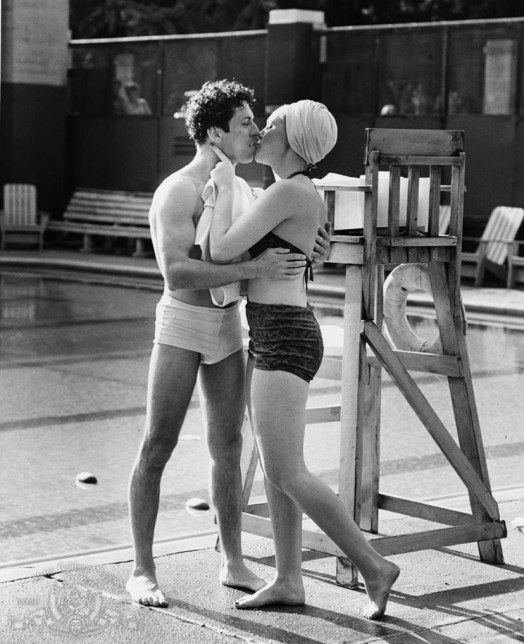
Introduction
Jake LaMotta was a middleweight boxer in the ‘40s and ’50s. He won the middleweight championship in 1950 and lost it in 1951. LaMotta was arrested in 1958 for allowing a minor to enter one of his discotheques. He penned a memoir in 1970. You may not think these are things illustrious art is made up of, but in the hands of the master, Martin Scorsese, and an equally adept screenwriter, Paul Schrader – almost any subject may be executed with fierce precision. Raging Bull is that well-executed.
If tragedy is the tale of a virtuous personage who is brought to naught by a single inadequacy, Raging Bull is not a tragedy at all. Jake LaMotta is petty, obsessed, envious, incredulous, evil, insecure, vicious, and ungrateful. His downfall – the overall plot of Raging Bull based on his real-life – is a simple ramification of being a hurtful human being, not an abject deformity in an otherwise estimable character. That such a movie can be made – and that it’s so universally admired – suggests there is enough common grace in the world for audiences and film critics to recognize the ghastliness of self-destruction (at least on the silver screen).
Violence of Raging Bull
LaMotta is belligerent in practically each and every sequence in the movie, with the bunch of fives in the ring and verbals outside. He’s at war with everyone all the time. In the opening scene, he objurgates his first wife for overcooking his steak, and when his brother tries to reconcile, he turns to him. Then he is stood in the ring, hitting someone. Then he’s out again, arguing. Later, he becomes paranoid, convinced that his woman is cheating on him. He hits her and gradually drives her away. It is LaMotta and the story of his life. LaMotta’s anger and angst serve him well in the ring, making him a better fighter. They serve him poorly outside, making him unbearable for both others and himself.
The only time he gives in to someone is by throwing a match to propitiate the mafia in exchange for a shot at the title. Then he cries like a baby and is ashamed of surrendering. LaMotta is aware on some level that he is a slave to fear and malice and boxes to compensate. After hitting his wife and brother, he steps into the ring and takes a terrible beating in what must be one of the most bestial scenes in the boxing film genre. He stands up and endures it, knowing that he warrants some form of retribution.

Insecurities
Most of LaMotta’s insecurities center on his relationships with women. The film can be read as a tour de force into sexual insecurity. LaMotta idealizes Vicky when he sees her for the first time; then he becomes suspicious of her, even starts resenting her after their marriage (exemplification of the Madonna-Whore complex). He cultivates a need to be sure – absolutely sure – that his wife is alone; becomes paranoid when she’s absent. Howbeit, it’s not about her in effect; it’s about what he thinks his relationship with her says about his manhood. If she cheats on him, she derides him and his manhood coram populo. That is a truly unbearable idea. The world needs to know that Jake LaMotta is a “real man.”
The film can be read on a more general level as well. Sex is extrinsic; it is just the idea that engenders LaMotta’s specific paranoia. All men covet accreditation, esteem, and veneration. LaMotta demanded veneration in the form of succumbing to his balled fists and staying away from his woman. For others, it might acquire the form of mazuma, triumph, acclaim, or something else. The peculiar element isn’t the specific object by means of which respect is delivered, but the intensity with which it is commanded. LaMotta was enslaved by his need for veneration. During the course of his enslavement, he castigates and ravages anything and everything important to him – his boxing, his marriage, his brother’s love. Such is the character of idolatry and sin.

Culmination of Raging Bull
Raging Bull is unexpectedly typical. LaMotta ultimately meets a catastrophe and comprehends how strayed he has become. In his prison cell, he despairs and cries out in anguish, one of the most dolorous scenes in the history of cinema. It is a harrowing moment, almost bodily excruciating to watch. In the final scene, LaMotta recites a monologue to himself in the mirror, lines of which serve as a condemnation and imputation of himself. There is no redemption and reclamation for LaMotta, only the knowledge that now at least he sees how much impairment he caused to himself.
Raging Bull is not a ‘pretty’ movie. It is a character study of a highly disagreeable man. One may read his life as a cautionary tale and be contented with the climax of the story. However, the film has an oppressive feel to it that works against this satisfactory grain. If the film has one ‘flaw,’ it is that there is no elevation, no final salvation. LaMotta grows up to see what he’s done to himself and his beloveds, but he can’t change. He can only grow old in his pain. This is perhaps the most venturesome thing about Raging Bull – it tells the truth that we can’t really ‘change’ ourselves. If there is no other-worldly emancipator, we are all still in the prison cell, banging on the walls and screaming in anguish, “Why? Why? Why?” without escape.




